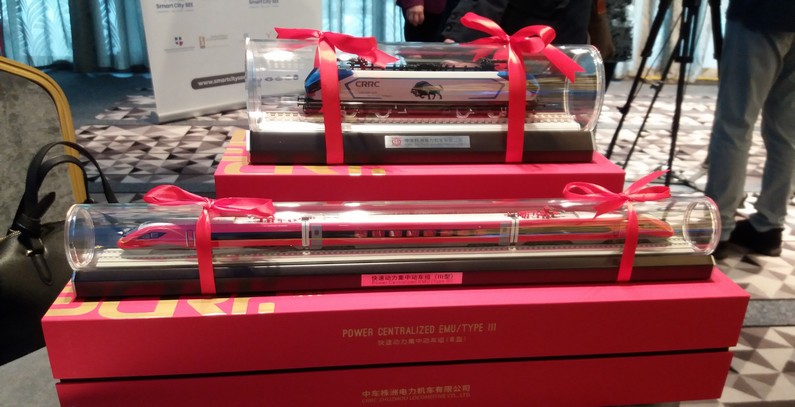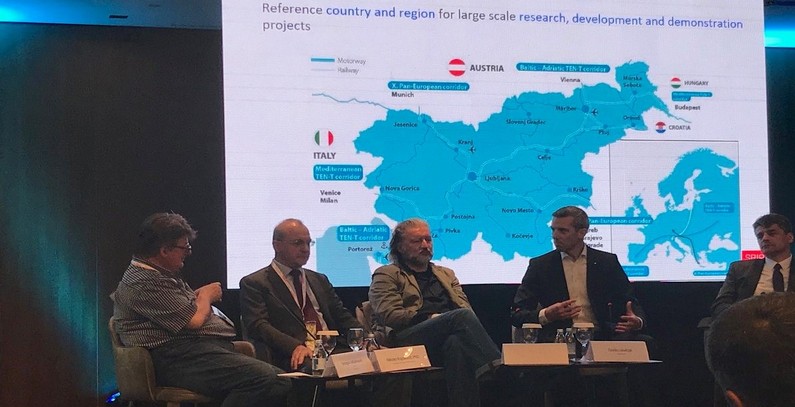
Photo: BGEN
Urban sprawl requires and is driving a smart city transformation, according to the main messages of the Smart City SEE19 international conference held in Belgrade. The smart city concept is part of innovative solutions that need to be regulated in Serbia through the adoption of a new energy law, while e-mobility, which is part of the concept, should be powered by renewables, not coal, according to panelists.
A smart city digitally controls public transportation and utility services such as outdoor lighting, heating, and water supply to ensure efficient resource management, reduce pollution, improve traffic flow, and, consequently, improve the quality of life in urban areas. The infrastructure needed to implement the smart city concept requires digitalization, the internet of things (IoT), and the use of blockchain, according to the Smart Connectivity panel, whose participants included representatives of tech companies Mainflux, Strawberry Energy, and Intracom Telecom.
Opening the conference, Serbian minister without portfolio for innovation and technology development Nenad Popović cited the UN’s estimate according to which 70% of the global population will live in urban areas by 2025, a development requiring an urgent smart city transformation. He also discussed data showing that an efficient implementation of the smart city concept can save time spent in traffic by 15-30 minutes per person and cut water consumption by 25-80 liters per person a day.

The smart city concept is part of innovative solutions that need to be regulated under a new energy law, whose adoption is needed to align Serbia’s legislation with the EU’s Clean Energy for All Europeans package, said Aleksandra Tomić, president of the Serbian Parliamentary Energy Policy Forum and chairperson of the parliamentary finance committee, at the Smart Energy – Smart Grid panel, which examined challenges in renewable energy production and distribution.
E-mobility should be powered by renewables, smart grids can regulate load
At the Smart Mobility panel, professor Nikola Rajaković of the University of Belgrade School of Electrical Engineering (ETF) spoke about how e-mobility helps resolve the problem of cities’ energy sustainability.
Serbia has around 2 million cars, and if these all became electric cars, the country’s total energy consumption, currently below 30 TWh annually, would rise by 4 TWh, research shows. It would be detrimental to power this additional consumption with electricity produced by coal power plants, Rajaković said, calling for a shift to renewable energy sources. He also said that the simultaneous charging of 2 million electric cars would overload the grid, but that the load can be regulated by smart grids’ smart algorithms.
Rajaković also discussed research that assumed a 2025 energy mix and found a Mercedes C 220, fitted with an internal combustion engine, would emit 221 grams of CO2 per kilometer, compared to a Tesla electric automobile, which would emit 83 grams of CO2 per km.
Examples of good practice from the region
Two examples of good practice from the region were also presented at the Smart Mobility panel.

Darko Levičar of the Automotive Cluster of Slovenia (ACS) discussed experiences in the implementation of the smart city concept in Ljubljana and the EDISON international green mobility partnership project, which he coordinates. EDISON (Eco Driving Innovative SOlutions and Network) is a strategic innovative partnership project involving more than 120 partners from political, research and development, local government, industry, and IT circles to create a knowledge base needed for the smart city concept development.
Levičar also recalled the Green Balcanica project aimed at equipping highways linking Munich, Salzburg, Ljubljana, Zagreb, Belgrade, Skopje, Podgorica, Tirana, and other cities with a network of strictly green renewable energy supported chargers for electric vehicles.
Drago Gverić, director of the Innovation Centre Banja Luka, presented Banja Luka’s City Development Strategy for 2018-2027, envisaging the city’s development into a modern urban space based on the smart city concept.
The concept includes a further development of e-governance and the implementation of efficient e-services for people and businesses, the transformation of the city infrastructure towards smart technologies, and support to innovation in the information and communication technology (ICT) sector. The main goals of implementing the concept are to increase the use of ICT solutions by 30%, boost electronic payments and money transfer by 20%, and digitalize up to 40% of local government services by 2027.
Of course, all this requires political will and the participation of both citizens and the business sector.


















Be the first one to comment on this article.